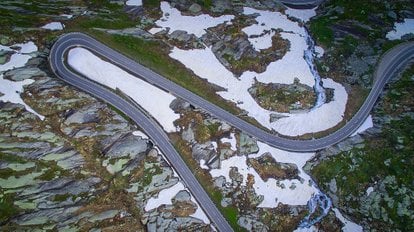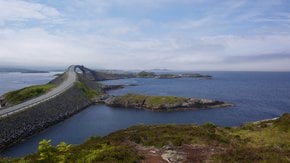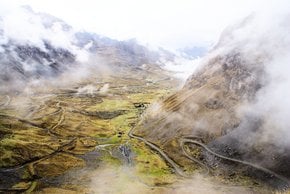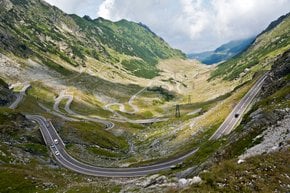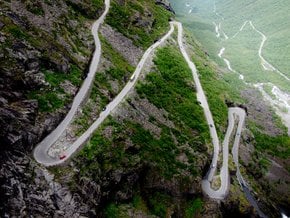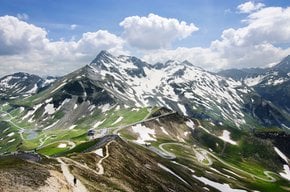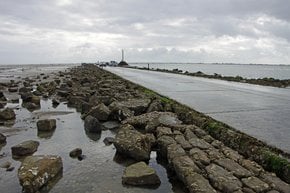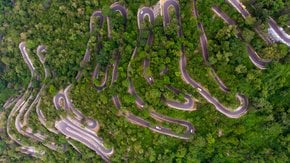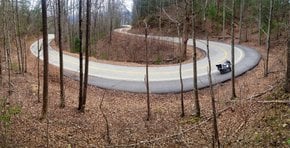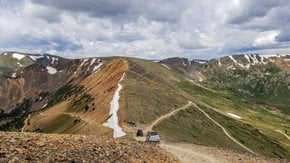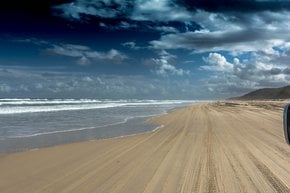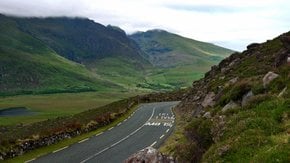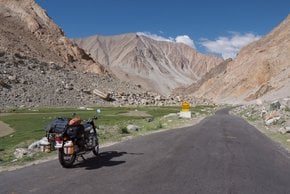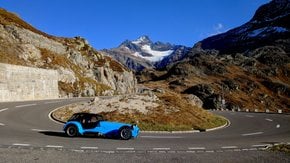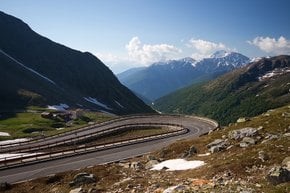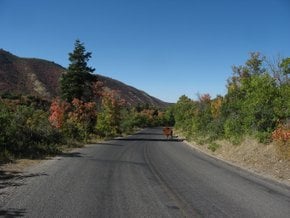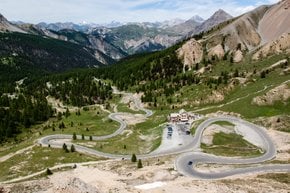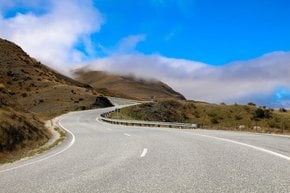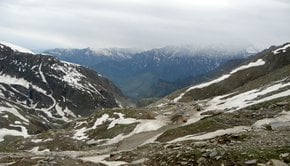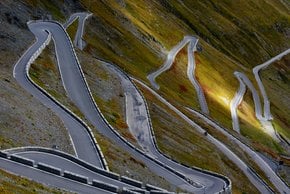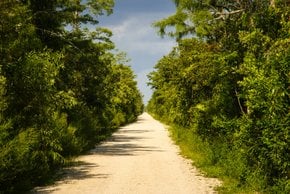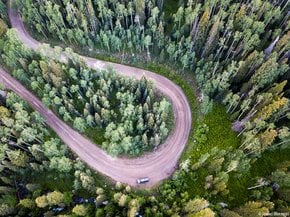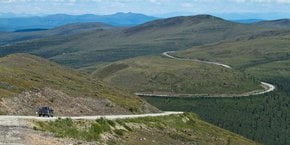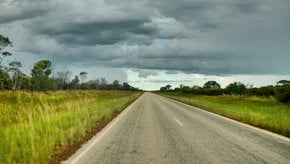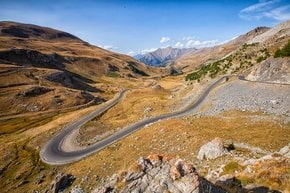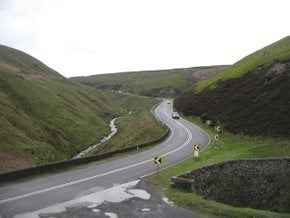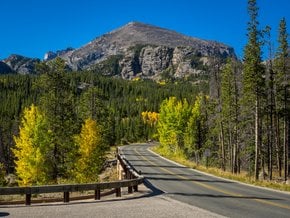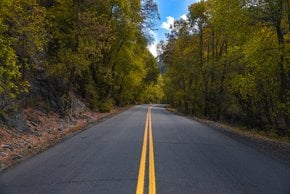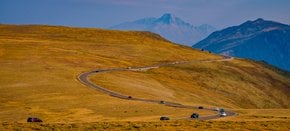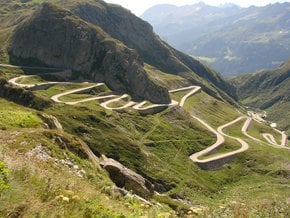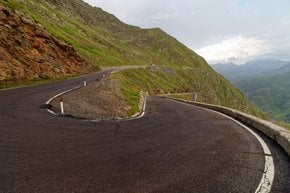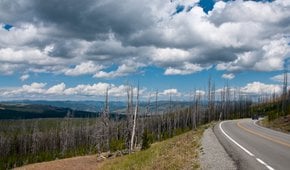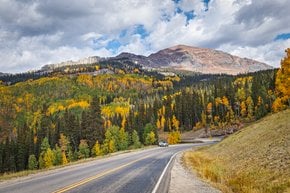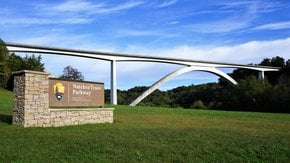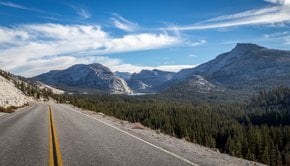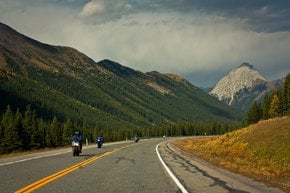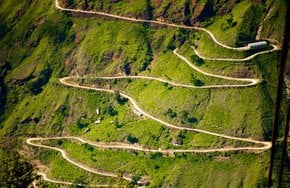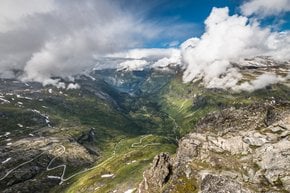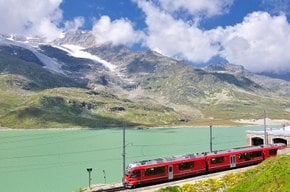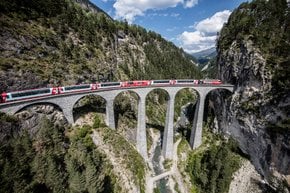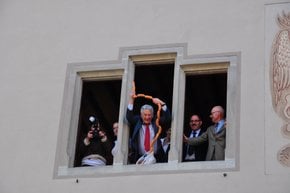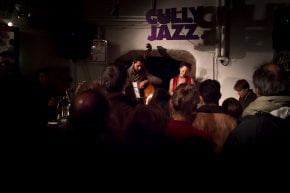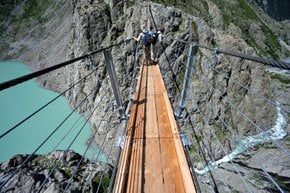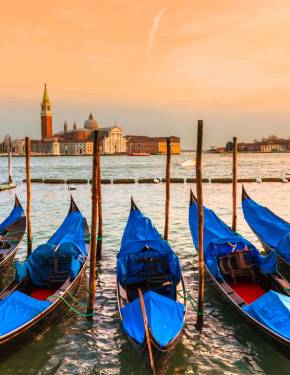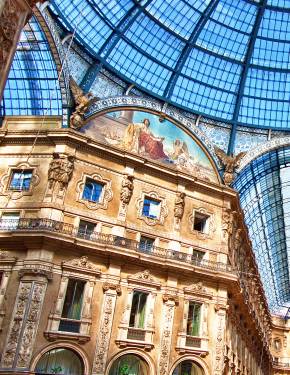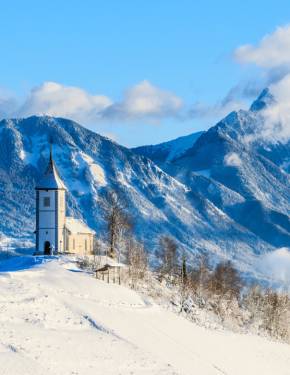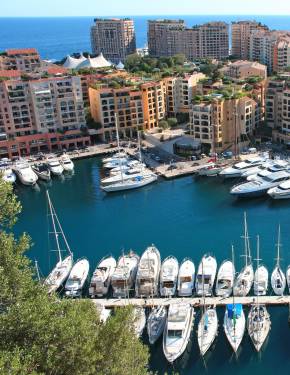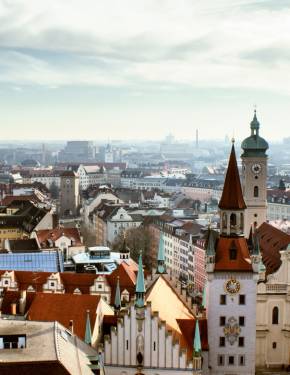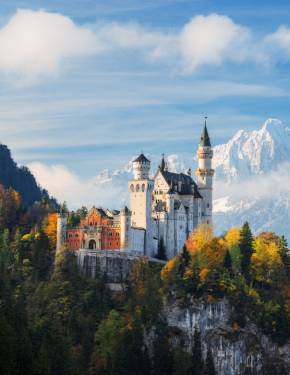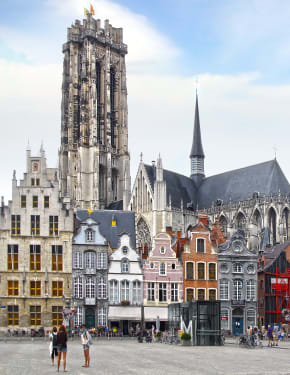Grimsel Pass in Switzerland 2026
The road that crosses the continental divide between the North Sea and the Mediterranean Sea
Best time: June–mid-October
The Grimsel Pass is located in the Bernese Alps between the valley of the river Aare, the valley of the river Rhône, at an elevation 2,164 metres (7,100 ft). The pass is traversed by a 38-km (24-mi) paved road that connects Gletsch and Meiringen, Switzerland. The road is open only in the summer, roughly from June to mid-October (during some years also starting in May), because of heavy snowfalls in winter. Therefore, the best way to get to the ski resorts is by local trains. The pass road is a fast and efficient route to get from canton Bern to canton Valais, which also offers amazing views from the summit with an overlook of the Lake Grimsel, Grimsel Hospiz, the town of Gletsch, and Räterichsbodensee reservoir.
The steepest and the most scenic section of the road starts near Handeck where the road features breathtaking hairpin bends and an 850-m (2,790 ft) tunnel to the Räterichsbodensee reservoir. A few more climbs, and drivers get to the scenic Lake Grimsel and the Grimsel Hospiz. This historic hotel located at 1,980 m (6,500 feet) dates back to 1142. In 1932 it was the first electrically heated hotel in Europe. After Grimsel Hospiz, the final climb features a few more switchbacks and hairpin bends before you get to the top. On the way down, the road gets narrow with several blind spots.
When driving through Grimsel Pass, you may want to stop by the Gelmerbahn, the world’s second steepest funicular which ascends from Handeck to Lake Gelmer with a gradient of 106%. In winter it takes skiers to the top when the Grimsel Pass Road is closed. On the east from the town of Grimsel, you can continue along the scenic Furka Pass, one of the highest paved roads in Switzerland.
Grimsel Pass has been used since the Roman times. In 1211, it was crossed by troops of Berthold V, Duke of Zähringen, and has become the major trade route in the Middle Ages. The paved road was built here in 1894.

